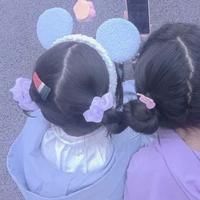

- Tiếng Anh
- Lớp 6
- 10 điểm
- luongkhanhha -
1, We ...... to school on saturday. a, not go b, do not go c, does not go d, goes 2, John and I ........ badminton at 3 p.m. tomorrow a, played b, are playing c, am playing d, play 3, Susan: we are making a cake on Sunday. Do you want to join? Peter: ............... a, thanks! b,sure! c, you're welcome d,of course 4,My house has three floors............. it has no yard. a, so b,because c,but d,and II, rewrite the following 1, there are three bedrooms in my house suy ra là MY house ................. 2, Kate's birthday party is tonight suy ra là Kate is .................... 3, my mother teaches at this school. suy ra là my mother is............. 4, Rachel's hair is long and brown suy ra là rachel has III, rearrange the given 5, I/like/ studying/ Minh/ but/ don't. / geography 6, in the pank/ after school. / My best friend and I / play / ofter 7, In the countryside?/or/ do you / in the city/ live 8, the third floor. / is/my classroom/ on
Hãy luôn nhớ cảm ơn và vote 5*
nếu câu trả lời hữu ích nhé!
TRẢ LỜI
I, choose the correct answer
1, We ...... to school on saturday.
a, not go b, do not go c, does not go d, goes
Answer: B, do not go
Explanation: We use do not to make a negative sentence in the present simple tense with plural subjects like we, they, you, etc. We also add -s to the verb with singular subjects like he, she, it, etc.
2, John and I ........ badminton at 3 p.m. tomorrow
a, played b, are playing c, am playing d, play
Answer: B, are playing
Explanation: We use are playing to make a sentence in the present continuous tense with plural subjects like we, they, you, John and I, etc. We use this tense to talk about an action that is happening now or around now, or an action that is planned for the future.
3, Susan: we are making a cake on Sunday. Do you want to join?
Peter: ...............
a, thanks! b,sure! c, you're welcome d,of course
Answer: B, sure! or D, of course!
Explanation: Both sure! and of course! are possible ways to accept an invitation or offer. They show that Peter agrees to join Susan. Thanks! is a way to express gratitude, but it does not show whether Peter accepts or declines. You're welcome! is a way to respond to someone's gratitude, but it does not make sense in this context.
4,My house has three floors............. it has no yard.
a, so b,because c,but d,and
Answer: C, but
Explanation: We use but to connect two clauses that contrast with each other. In this case, the first clause shows that the house is big, while the second clause shows that the house lacks something. So is used to show a result or consequence. Because is used to show a reason or cause. And is used to show an addition or connection.
II, rewrite the following
1, there are three bedrooms in my house
suy ra là MY house .................
Answer: My house has three bedrooms.
Explanation: We can use has to show that something belongs to or is a part of something else. For example, my house has a roof, a door, a window, etc. We can also use there are to show that something exists or is located somewhere. For example, there are three bedrooms in my house, there are many people in the park, there are some books on the table, etc.
2, Kate's birthday party is tonight
suy ra là Kate is ....................
Answer: Kate is having a birthday party tonight.
Explanation: We can use is having to show that something is planned or arranged for the future. For example, Kate is having a birthday party tonight, I am having a meeting tomorrow, they are having a picnic on Sunday, etc. We can also use 's as a contraction of is. For example, Kate's having a birthday party tonight.
3, my mother teaches at this school.
suy ra là my mother is.............
Answer: My mother is a teacher at this school.
Explanation: We can use is to show the identity or occupation of someone or something. For example, my mother is a teacher, my father is a doctor, this is a book, that is a cat, etc. We can also use teaches to show the action or activity that someone does as a job or profession. For example, my mother teaches at this school, my father works at a hospital, she writes books, he plays soccer, etc.
4, Rachel's hair is long and brown
suy ra là rachel has.............
Answer: Rachel has long and brown hair.
Explanation: We can use has to show the physical features or characteristics of someone or something. For example, Rachel has long and brown hair, I have blue eyes, he has a big nose, she has a small mouth, etc. We can also use is to describe the quality or condition of someone or something. For example, Rachel's hair is long and brown, my eyes are blue, his nose is big, her mouth is small, etc.
III, rearrange the given
5, I/like/ studying/ Minh/ but/ don't. / geography
Answer: I like studying geography, but Minh doesn't.
Explanation: We can rearrange the words to make a sentence with the following structure: subject + verb + object + conjunction + subject + verb + negation. We also need to add a comma before the conjunction, and a period at the end of the sentence.
6, in the pank/ after school. / My best friend and I / play / ofter
Answer: My best friend and I often play in the park after school.
Explanation: We can rearrange the words to make a sentence with the following structure: subject + adverb + verb + preposition + object + preposition + object. We also need to capitalize the first word, and add a period at the end of the sentence.
7, In the countryside?/or/ do you / in the city/ live
Answer: Do you live in the city or in the countryside?
Explanation: We can rearrange the words to make a question with the following structure: auxiliary verb + subject + verb + preposition + object + conjunction + preposition + object. We also need to capitalize the first word, and add a question mark at the end of the sentence.
8, the third floor. / is/my classroom/ on
Answer: My classroom is on the third floor.
Explanation: We can rearrange the words to make a sentence with the following structure: subject + verb + preposition + object. We also need to capitalize the first word, and add a period at the end of the sentence.
Hãy giúp mọi người biết câu trả lời này thế nào?
![]()
Câu 1: B
- Thì hiện tại đơn: We, They, I + do
Câu 2: D
- Thì hiện tại đơn: Chủ ngữ số nhiều+Vo
Câu 3: B
Câu 4: C
II:
Câu 1: My house has three bedrooms
Hãy giúp mọi người biết câu trả lời này thế nào?
![]()
Bạn muốn hỏi điều gì?
Bảng tin
Bạn muốn hỏi điều gì?
 Inbox: m.me/hoidap247online
Inbox: m.me/hoidap247online Trụ sở: Tầng 7, Tòa Intracom, số 82 Dịch Vọng Hậu, Cầu Giấy, Hà Nội.
Trụ sở: Tầng 7, Tòa Intracom, số 82 Dịch Vọng Hậu, Cầu Giấy, Hà Nội.







